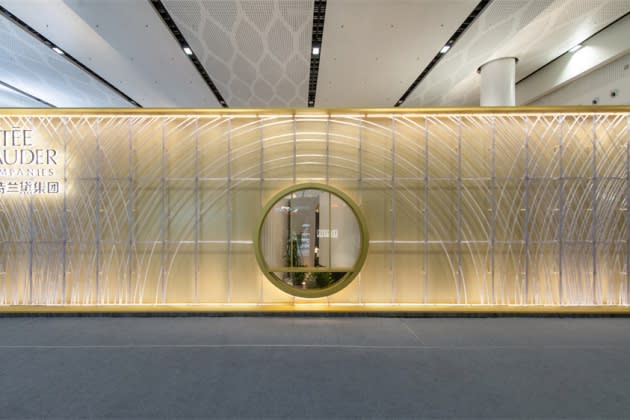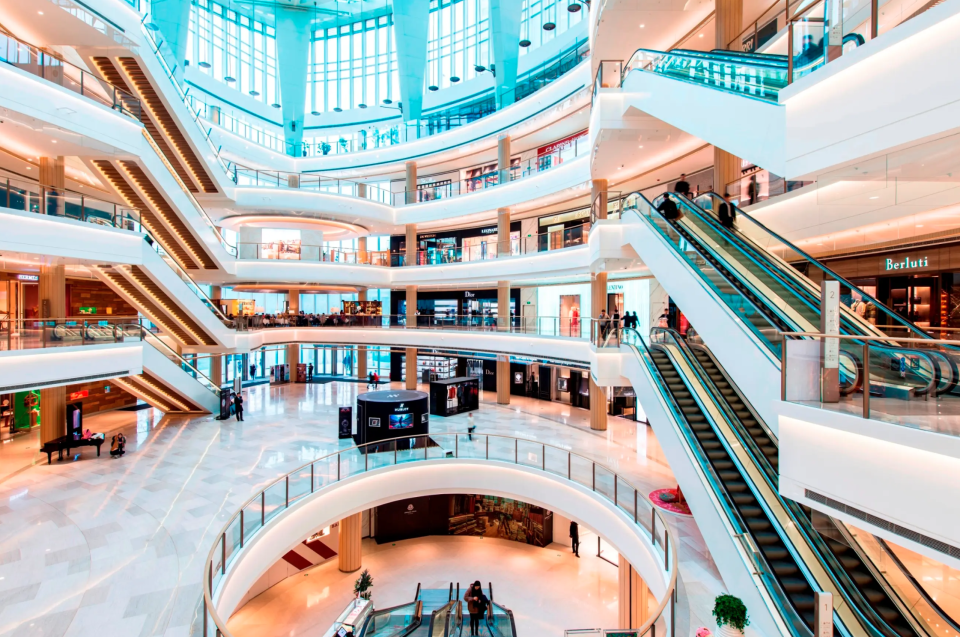China Insight: The Challenges and Opportunities of the ‘Dual Circulation’ Development Strategy

In the third year of China’s dual circulation strategy aimed at prioritizing domestic consumption while remaining open to international investment and trade, the fashion consumer market is facing a major test due to the zero-COVID-19 policy and other pressures.
In the first half of 2022, the fashion hubs of Beijing, Shanghai, Guangzhou and Shenzhen were disrupted by the pandemic to varying degrees, severely disrupting local travel and demand, which had been seen as the driving force behind the policy, although the tourist center of Hainan performed better.
More from WWD
According to economic data released by the National Bureau of Statistics of China earlier this month, the country’s major economic indicators in July generally fell compared to the month before, meaning China is unlikely to meet its annual growth target. Against this backdrop, in the fashion industry, the advantage the nation’s low-cost production capacity provides is being increasingly challenged by other countries even as domestic consumption remains depressed. This raises the question of whose market share is shrinking?
Narrowing domestic consumption makes consumer confidence a key variable
In terms of domestic consumption, the supply and demand sides are being reformed, but the matching of high-quality supply and demand depends on the level of Chinese consumer confidence.
Taking the retail commercial market data in the first half of 2022 as an example, leasing income of Shanghai Hang Lung Plaza plunged 17 percent to $106.6 million and tenant sales plunged 38 percent, in stark contrast to the same period a year earlier when rental income increased by 56 percent and tenant sales more than doubled year-over-year. Swire Properties’ interim results for fiscal year 2022 released earlier this month showed total group revenue of 6.7 billion Hong Kong dollars, or $853.9 million, down 26 percent year-over-year. Its mall sales in mainland China fell across the board: retail sales at TaiKoo Li Sanlitun in Beijing fell by 26 percent, at Indigo in Beijing sales slipped by 25 percent, at Shanghai’s HKRI Taikoo Hui sales plunged by 52.9 percent, at Sino-Ocean Taikoo Li Chengdu sales were down by 8.2 percent and at Taikoo Hui in Guangzhou by 6.9 percent.

High-end commercial real estate is the most important barometer for fashion and luxury retailing, and LVMH Moët Hennessy Louis Vuitton’s results for the first half are further evidence of the impact the COVID-19 lockdowns have had on the Chinese market. LVMH reported an overall 28 percent increase in sales to 36.7 billion euros, with double-digit growth in all business units. While sales in Europe and the U.S. rose sharply, LVMH’s revenue in China saw a “severe double-digit” decline. Kering’s first-half results showed consolidated sales up 23 percent, but on average 20 percent of its stores in China were closed in the second quarter.

LVMH and Kering both believe that the situation in China is improving, but it is still unstable. According to data released by Bain & Company in the China Luxury Market Report 2021 in January, the personal luxury market in China still maintained high double-digit growth in 2021, with the market’s overall size nearly doubling since 2019 before the pandemic. It predicted that the Chinese market was expected to become the largest luxury market in the world by 2025. But it is unclear whether this still will happen given the steep decline in the market this year.
As for overall domestic demand, according to national statistics total retail sales of consumer goods grew by 2.7 percent year-over-year in July, compared to 3.1 percent the month before. Excluding automobiles, however, retail sales rose only 1.9 percent. Online retailers continue to perform better than brick-and-mortar stores. National online retail sales in the first half of 2022 were $913.5 billion, up 3.1 percent year-over-year, with online sales of physical commodities rising 5.6 percent to $799 billion, accounting for 25.9 percent of total sales of consumer goods. At Tmall and other online platforms, the fastest growth rate was from young users born around 1995 and Millennials.
Hainan becomes the link between domestic and international markets under the “Dual Circulation Development Pattern”
But the COVID-19 lockdowns are only one difficulty facing the Chinese market and impacting demand for international brands. There is the plight of Chinese stocks, the blockage of overseas listings, the cooling of entrepreneurship, the turbulence of geopolitical relations and the sudden pressure in the capital market in the first half of 2022.
However, data from the second China International Consumer Products Expo in Hainan indicate international companies continue to invest in China. Han Shengjian, director of the Department of Commerce of Hainan Province, revealed that the second Consumer Expo officially issued a total of 80,000 licenses and that the spending on pavilion construction by L’Oréal and the Estée Lauder Cos. this year was more than $2.94 million. And the Chinese consumer continues to snap up overseas luxury labels, from fashion to alcohol: high-end whisky brand The Dalmore’s first offline exhibition on Tmall sold the Dalmore Gilded Age No. 5 Classic China Edition for $394,117 and Eddington will sell its legendary 81-year-old rare single malt whisky for the first time in China.
Challenges contain opportunities. The Hainan Consumer Expo hopes to become a key exhibition for international brands as the city seeks to appeal to domestic travelers looking to buy high-end products as well as overseas companies aiming to sell to them. Since the release of the General Plan for the Construction of Hainan Free Trade Port in early June 2020 and the listing of 11 key parks at the end of the month, Hainan FTP has been building an international tourism consumption center in order to lure consumers back.
The 2022 Consumer Expo attracted more than 280,000 visitors and more than 40,000 buyers and professional visitors, as well as more than 1,200 journalists. There were 1,955 companies from 61 countries and regions (including 1,107 companies in the international section and 848 firms in the domestic one), more than 2,800 consumer brands (including 1,643 in the international section and more than 1,200 in the domestic area) and more than 600 new global products were unveiled.
The exhibition area of international brands increased from 75 to 80 percent compared with the first Consumer Expo. Many companies took the opportunity to show off their sustainability initiatives. For example, Coty highlighted its innovative practice of using carbon capture ethanol for perfumes, developed in collaboration with LanzaTech, the world’s leading supplier of sustainable raw materials.
Can RCEP boost the development of China’s textile and garment exports?
China’s textile and apparel industry has been on a roller-coaster ride over the past two years, swinging from “an idle factory is hard to find” last year when orders were booming to a sharp drop in production this year as a result of transferred orders, shrinking demand and sharp exchange rate fluctuations. Yet some companies with advantageous production capacity are taking advantage of the Regional Comprehensive Economic Partnership free-trade agreement and growing despite the headwinds.
According to data from the China Chamber of Commerce for Import and Export of Textiles, in the first half of 2022 textile and apparel factory orders were dismal, with orders valued at about $6 billion being canceled — a number that is expected to climb to $10 billion in the second half. But at the macro level, textile and apparel exports were up 11.7 percent in the first half to $156.49 billion. For example, Shenzhen Customs issued 2,400 RCEP certificates of origin for textile and garment export enterprises, with a value of $14.7 million.
The aim of the RCEP, which officially came into effect at the beginning of 2022, is to break down trade barriers among member countries and benefit exports in many industries, including textiles and apparel and light industry. But the RCEP is a double-edged sword — demographic advantages in Southeast Asian countries and the import of high-tech products from Japan and South Korea will impact some of China’s companies and force the transformation of China’s labor-intensive industries.
In the first half of 2022, China’s exports to RCEP member countries amounted to $45.57 billion, up 13.7 percent year-over-year. This shows that the implementation of RCEP can benefit Chinese companies. If China’s textile and apparel sector can continue to upgrade as it faces competition from lower-cost countries, it can make full use of the preferential policies of the RCEP, reduce tariff costs and optimize its use of low-end production and upstream design.
In conclusion, the Chinese consumer market has not “rebounded” as expected and exports are still in a mixed industrial transition. The Consumer Expo in Hainan temporarily boosted consumption, but then the city was impacted by the pandemic. Although, as of press time, the number of infected people discharged from Hainan has increased significantly and the situation continues to improve, the overall situation remains unstable, affecting both duty-free and local spending. Where does the momentum for economic recovery and confidence to again buy fashion and luxury products come from in a seemingly gloomy market? A market boost is unlikely until there is a a stable and sustainable industrial base and business environment.
Sign up for WWD's Newsletter. For the latest news, follow us on Twitter, Facebook, and Instagram.


